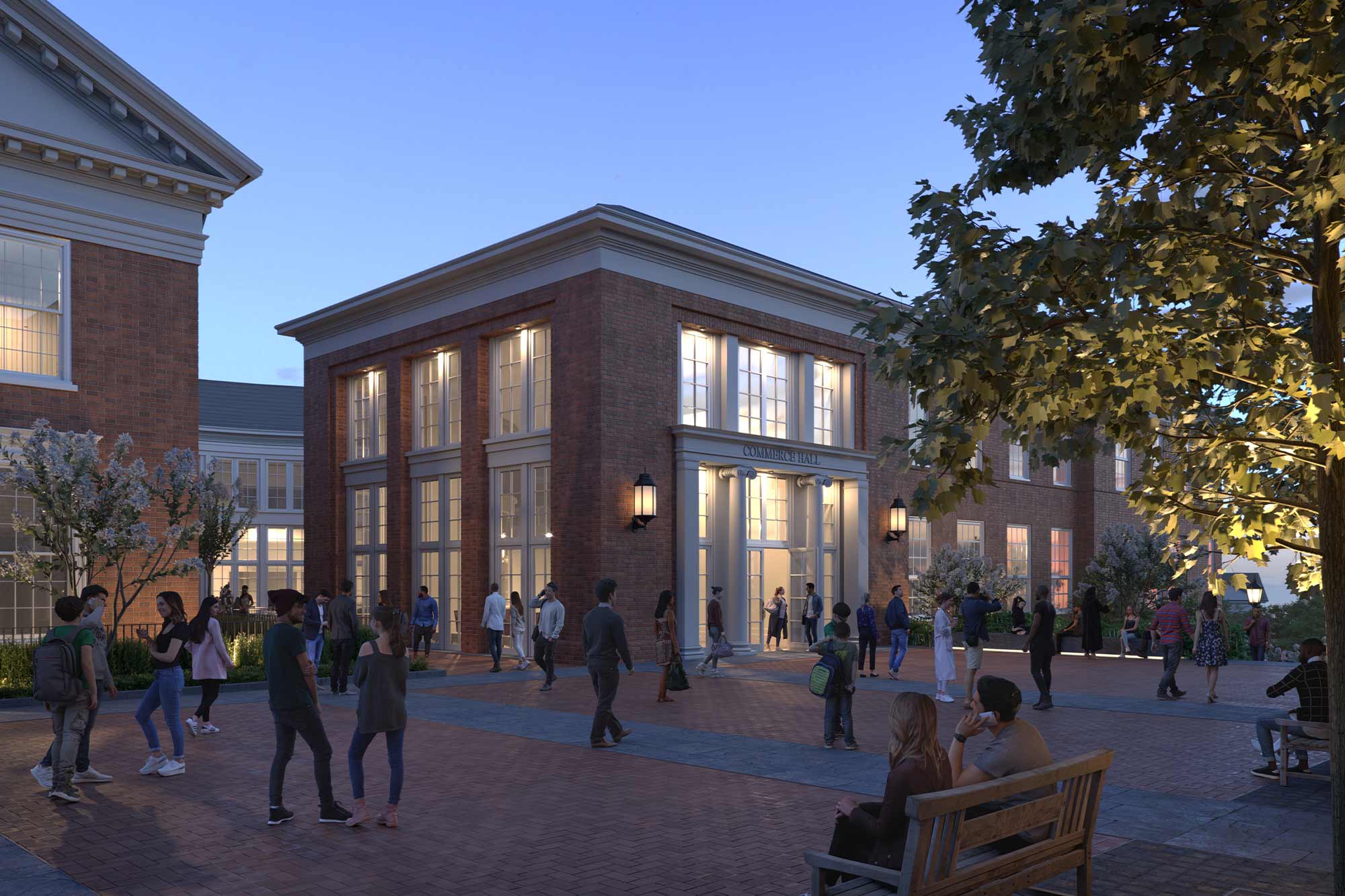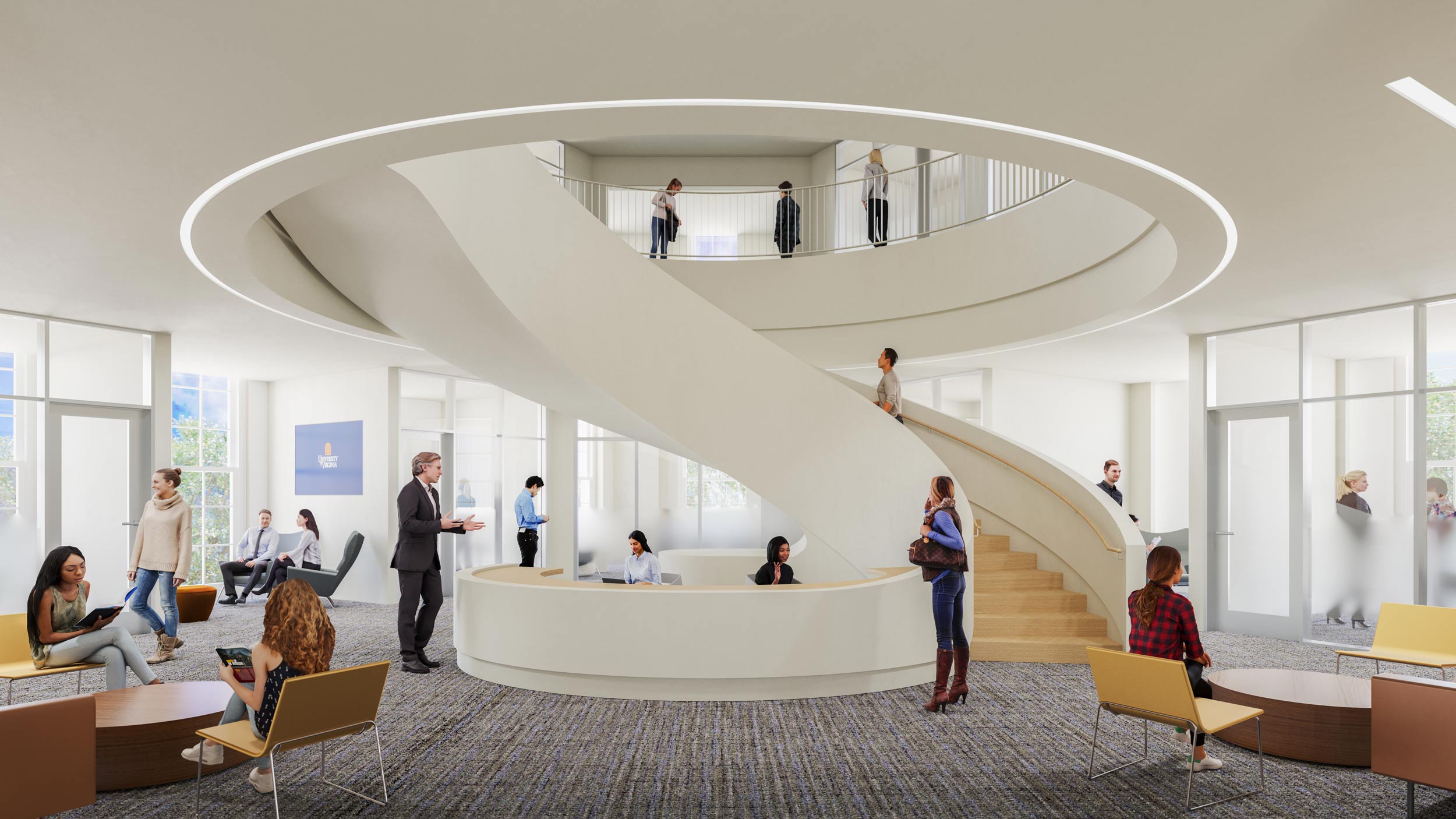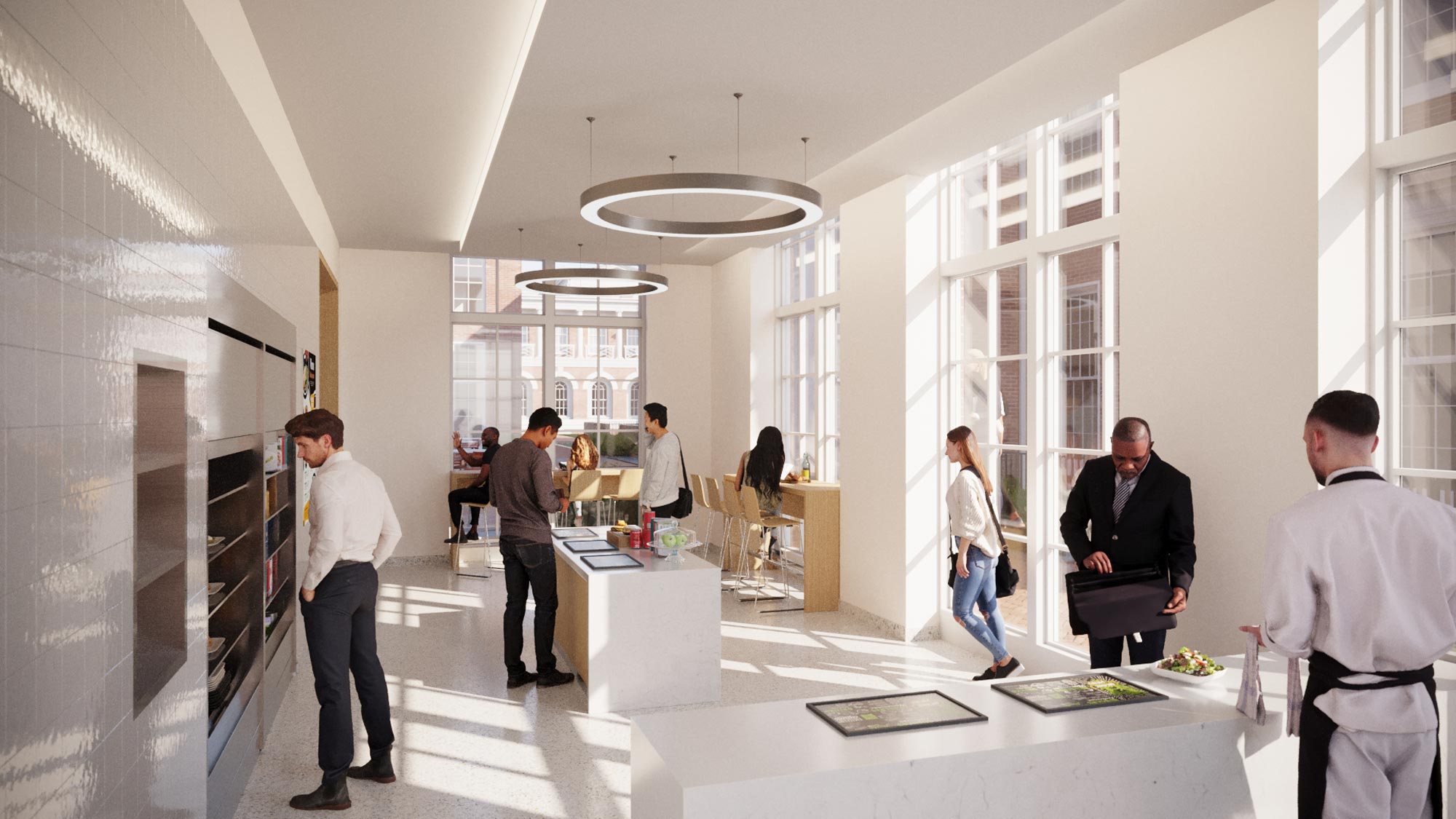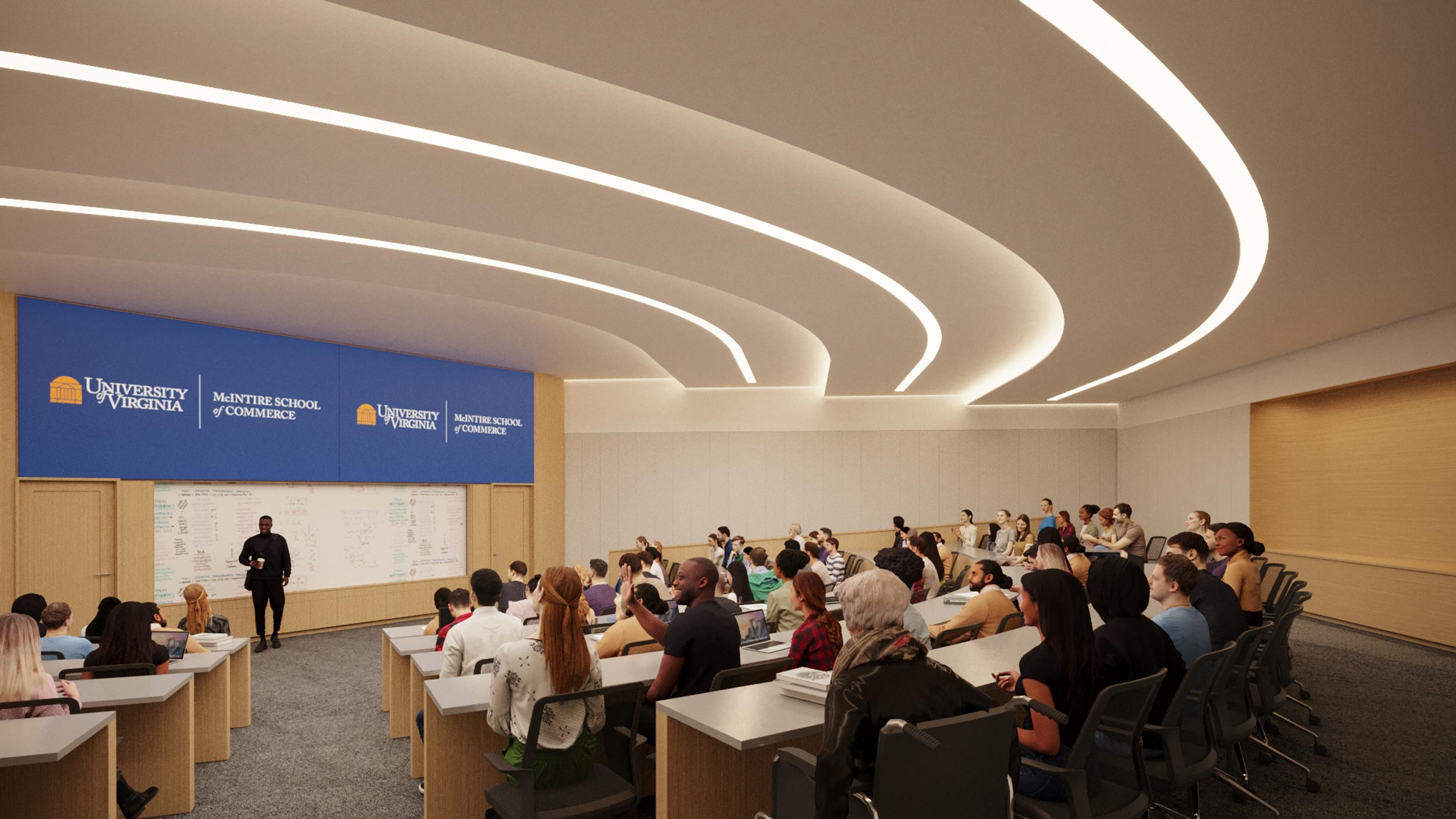Cobb’s original footprint resembled a capital “T,” with the top bar facing Hospital Drive. A 1930 addition extended the tail of the “T” and turned it into an “H,” with the rear of the building facing Jefferson Park Avenue. That 1930 expansion, along with the stem of the “T,” was recently demolished to make room for the new construction, with the original top bar portion of the building preserved.
Shumway Hall, financed in part by a $25 million donation from the Chris and Carrie Shumway Foundation, will help form an open courtyard, with a two-story wall of windows bringing natural light into the atrium directly below. Shumway Hall will contain student services; state-of-the-art, student-focused flexible classrooms; event spaces; technology and innovation laboratories; a café; and student study and lounge areas. The Commerce School plans to use the space to increase collaboration with faculty across Grounds, and to explore new degree and certificate programs.
“The development of this concept, where Shumway and Cobb halls are understood as discrete buildings that form an exterior courtyard between them, was a brilliant solution for this addition to the McIntire School,” Alice Raucher, architect for the University, said. “The design not only brings new life to the historic architecture of Cobb Hall, but adds a new, seemingly independent building that enhances the entire complex.”
For the renovation of Cobb Hall, Glave & Holmes’ Garrett said they wanted to maintain the hall’s front-entry corridor and re-establish the historic presence of two large classrooms at the opposite ends of the first floor. There was also a classroom on the top floor with a high ceiling that had been lowered over the years, and they wanted to restore it to its original height. The new renovation also reinstates a previously covered skylight.
“Renovation of historic buildings always involves a bit of forensics,” said Connie Warnock, an associate University architect. “Finding the structure of the skylight and its chain operator was exciting. An earlier renovation had covered it up and our team had never seen it before.”














